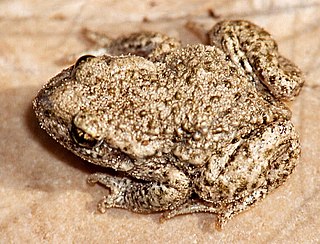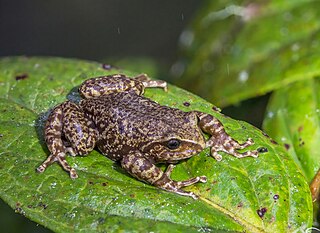Gnathostomulids, or jaw worms, are a small phylum of nearly microscopic marine animals. They inhabit sand and mud beneath shallow coastal waters and can survive in relatively anoxic environments. They were first recognised and described in 1956.

Mesotardigrada is one of three classes of tardigrades, consisting of a single species, Thermozodium esakii. The animal reportedly has six claws of equal length at each foot. This species was described in 1937 by German zoologist Gilbert Rahm from a hot spring near Nagasaki, Japan. The inability of taxonomists to replicate Rahm's finding has cast doubt on the accuracy of the description, making T. esakii, and by extension the entire class Mesotardigrada, a taxon inquirendum.

Eutardigrada are a class of tardigrades (Tardigrada) without lateral appendages. Primarily freshwater bound, some species have secondarily gained the ability to live in marine environments (Halobiotus). By cryptobiosis many species are able to live temporarily in very dry environments. More than 700 species have been described.

The Alytidae are a family of primitive frogs. Their common name is painted frogs or midwife toads. Most are endemic to Europe, but three species occur in northwest Africa, and a species formerly thought to be extinct is found in Israel.

Macrolepidoptera is a group within the insect order Lepidoptera. Traditionally used for the larger butterflies and moths as opposed to the "microlepidoptera", this group is artificial. However, it seems that by moving some taxa about, a monophyletic macrolepidoptera can be easily achieved. The two superfamilies Geometroidea and Noctuoidea account for roughly one-quarter of all known Lepidoptera.

The Cycloramphidae are a family of frogs endemic to southeastern Brazil. This family has seen large changes in its composition. Genera that have at some point been included in the Cycloramphidae are at present placed in the Alsodidae, Hylodidae, Leptodactylidae, and Rhinodermatidae. Of these, the Alsodidae and/or Hylodidae have also been considered as subfamilies of Cycloramphidae ; the Cycloramphidae, as recognized at present, would be similar to subfamily Cycloramphinae under such system.

Parasitiformes are a superorder of Arachnids, constituting one of the two major groups of mites, alongside Acariformes. Parasitiformes has, at times, been classified at the rank of order or suborder.

Tardigrades, known colloquially as water bears or moss piglets, are a phylum of eight-legged segmented micro-animals. They were first described by the German zoologist Johann August Ephraim Goeze in 1773, who called them Kleiner Wasserbär'little water bear'. In 1776, the Italian biologist Lazzaro Spallanzani named them Tardigrada, which means 'slow walker'.

Pristimantis is a very large genus of frogs distributed in the southern Caribbean islands and in Central and South America from Honduras to northern Argentina and southern Brazil. With 596 described species, the genus had more species than any other genus of vertebrate animals. Many of these species genus are endemic to the Northwestern Andean montane forests ecoregion in north-western South America.

Echiniscus testudo is a cosmopolitan species of tardigrade.

Craugastoridae, commonly known as fleshbelly frogs, is a family of New World direct-developing frogs. As delineated here, following the Amphibian Species of the World, it contains 129 species. They are found from the southern United States southwards to Central and South America.

Tactopoda or Arthropodoidea is a proposed clade of ecdysozoan animals that includes the phyla Tardigrada and Euarthropoda, supported by various morphological observations. The cladogram below shows the relationships implied by this hypothesis.
Nannophryne is a small genus of true toads, family Bufonidae, from South America. They are found in central Andean Peru south to southern Chile and adjacent Argentina.

Arthrotardigrada are an order of tardigrades, first described by Ernst Marcus in 1927.

Linopodes is a cosmopolitan genus of mites in the family Cocceupodidae. There are at least two described species.

Neotrombidium is a genus of velvet mites and chiggers in the family Neotrombidiidae. There are at least three described species in Neotrombidium.

Neotrombidiidae is a family of velvet mites and chiggers in the order Trombidiformes. There are at least four genera in Neotrombidiidae.

Hydryphantoidea is a superfamily of mites in the order Trombidiformes. There are about 6 families and more than 250 described species in Hydryphantoidea.

Teneriffiidae is a family of mites in the order Trombidiformes. There are at least four genera in Teneriffiidae.
Echiniscus madonnae is a tardigrade species, genus of Echiniscus. It was described by Polish zoologists Michalczyk and Kaczmarek Łukasz in South America in 2006, and named in honor of American singer-songwriter Madonna.















